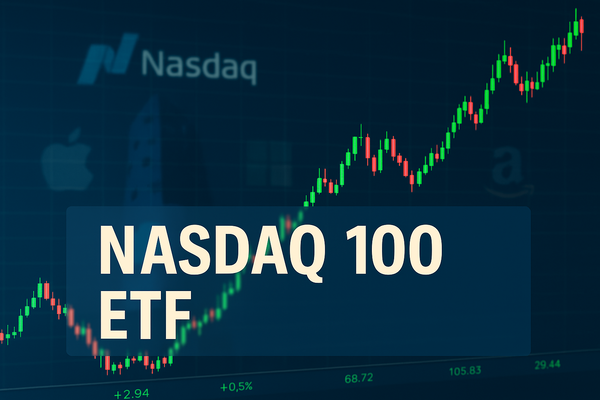Liquidity refers to the ease with which an asset can be converted into cash without significantly affecting its price. Highly Liquid Assets, like publicly traded stocks, can be sold quickly with minimal price impact.
Conversely, illiquid assets are challenging to sell promptly or without substantial price concessions.
Thus, which investment has the least liquidity? This article will rank the top 9 least liquidity investments and why they remain part of many diversified portfolios despite being difficult to sell or convert to cash quickly.
Understanding Liquidity in Investments

Liquidity measures how quickly and easily an asset can be sold at a price reflecting its intrinsic value. For example, cash and stocks are considered highly liquid, while real estate or private equity are less so.
Factors Influencing Liquidity:
Market Depth: The number of buyers and sellers in the market.
Transaction Costs: Fees and expenses associated with buying or selling the asset.
Time to Sell: The duration required to find a buyer and complete the sale.
Which Investment Has the Least Liquidity?

1) Private Equity
Private equity involves investing in companies that are not publicly traded, meaning there is no open market to buy or sell shares. Once an investor commits capital to a private equity fund, they usually cannot access it until the fund liquidates its holdings — often 5 to 10 years later. There are also legal and operational barriers to secondary sales.
The nature of private equity is long-term and strategic. The goal is to improve a company's performance and exit via a sale or ipo. That takes time. While illiquid, these investments can yield substantial returns due to their focus on growth and operational improvement.
2) Venture Capital
Venture capital funds target early-stage or startup companies with high growth potential but uncertain futures. These companies are typically years away from generating profits or reaching an IPO. There's little to no secondary market for VC investments, and capital is often locked in for a decade.
Venture capital's high-risk, high-reward nature makes it appealing to investors willing to trade liquidity for potential exponential returns. However, the long gestation period means investors must accept that their funds will be tied up for extended periods.
3) Real Estate
Buying and selling real estate involves significant time, paperwork, market conditions, and regulatory procedures. Transactions can take weeks or months to close, and properties can sit unsold during downturns. In many cases, sellers must also lower prices significantly to make a quick sale.
Despite the lack of liquidity, real estate remains a popular asset class for its tangible nature, potential rental income, tax benefits, and long-term appreciation. It is often used as a hedge against inflation, but the tradeoff is the difficulty of exiting quickly.
4) Art and Collectibles
Art and collectibles are unique, niche assets with subjective valuations. Unlike stocks traded in large, selling a piece of art or a rare coin may require months or years to find the right buyer willing to pay the desired price.
These assets can be appreciated substantially, especially if they are rare or carry historical significance. However, pricing is difficult, and the pool of buyers is limited. Investors are drawn to collectibles for prestige or passion rather than financial liquidity.
5) Hedge Funds
Hedge funds often impose lock-up periods when investors cannot withdraw their funds. Redemption notices are also typical, requiring investors to give advance notice — sometimes several months — before pulling out. The underlying investments may also be illiquid.
Hedge funds offer exposure to sophisticated strategies and can generate high returns. However, because of their complex structures and the need to protect the fund from mass withdrawals, investor liquidity is often sacrificed in exchange for access to these potentially lucrative strategies.
6) Limited Partnership Interests
Investors in limited partnerships are usually subject to strict terms outlined in a partnership agreement. These agreements often limit the transferability of interests, restrict early exits, and may require approval from general partners to sell.
Limited partnerships are for real estate, oil and gas, or private equity investments. They are attractive for their income and tax benefits, but the rigid structure and lack of a secondary market for interests make it hard to exit early.
7) Structured Products
Structured products are custom-designed financial instruments tied to underlying asset performance (like stocks or indices). Because they are bespoke, they don't have an active market and are often only redeemable through the issuer at maturity.
Investors choose structured products for tailored risk-reward profiles, capital protection features, or enhanced yield. The price for customisation and potential upside is an inability to easily resell or cash out before the end of the product's term.
8) Annuities
Annuities are contracts with insurance companies that promise a future income stream. Early withdrawals often come with steep surrender charges and tax penalties, making it expensive and difficult to access funds before the contract matures.
Annuities appeal to those seeking retirement security, guaranteed income, or tax deferral. The tradeoff is that once money is committed, it becomes inaccessible without penalty for a fixed period — sometimes until retirement age.
9) Certificates of Deposit (CDs)
CDs require you to lock your money away for a predetermined period in exchange for a guaranteed return. You'll usually face interest penalties or reduced returns if you need to withdraw funds early.
CDs are favoured by conservative investors seeking safe, predictable income. They are insured and low-risk, but the fixed time commitment makes them less liquid than savings accounts or money market funds.
Liquidity Spectrum of Common Investments
| Investment Type |
Liquidity Level |
Typical Holding Period |
| Cash |
High |
Immediate |
| Publicly Traded Stocks |
High |
Days to Weeks |
| Mutual Funds |
Moderate |
Days |
| Real Estate |
Low |
Months to Years |
| Private Equity |
Very Low |
5–10 Years |
| Venture Capital |
Very Low |
5–10 Years |
| Art and Collectibles |
Very Low |
Variable |
| Hedge Funds |
Low |
Months to Years |
| Annuities |
Low |
Years |
| Certificates of Deposit |
Low |
Months to Years |
Considerations for Investors
When evaluating investment options, consider the following:
Investment Horizon: Align investment choices with your time frame.
Liquidity Needs: Ensure sufficient liquid assets to cover short-term obligations.
Risk Tolerance: Understand that illiquid investments may offer higher returns but come with increased risk.
Diversification: Balance your portfolio with a mix of liquid and illiquid assets to manage risk and meet liquidity needs.
Conclusion
In conclusion, investments vary widely in their liquidity profiles. While illiquid assets like private equity, venture capital, and real estate can offer substantial returns, they require a longer-term commitment and carry higher risk.
Understanding the liquidity characteristics of each investment is essential for building a portfolio that aligns with your financial goals and risk tolerance.
Disclaimer: This material is for general information purposes only and is not intended as (and should not be considered to be) financial, investment or other advice on which reliance should be placed. No opinion given in the material constitutes a recommendation by EBC or the author that any particular investment, security, transaction or investment strategy is suitable for any specific person.




























